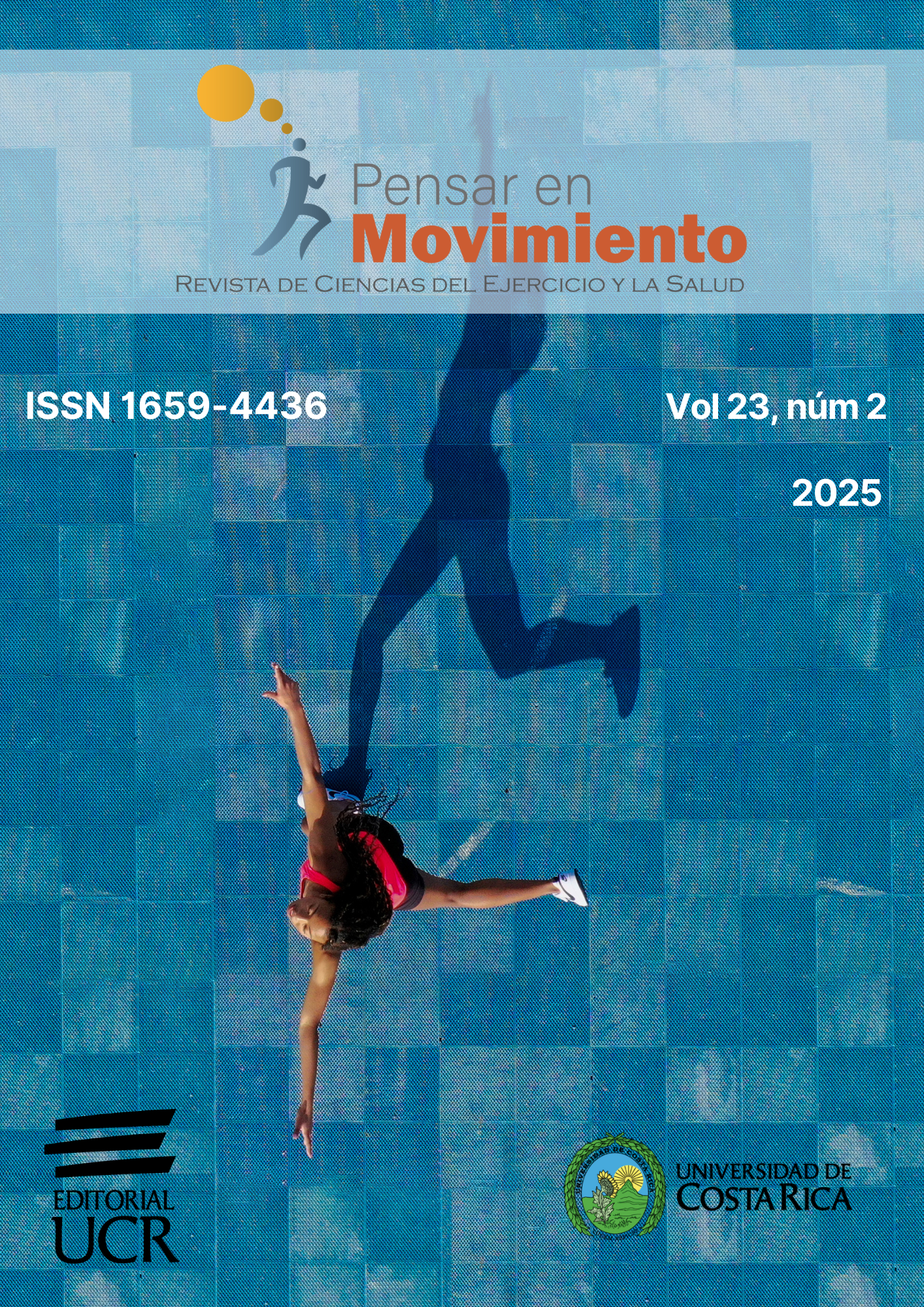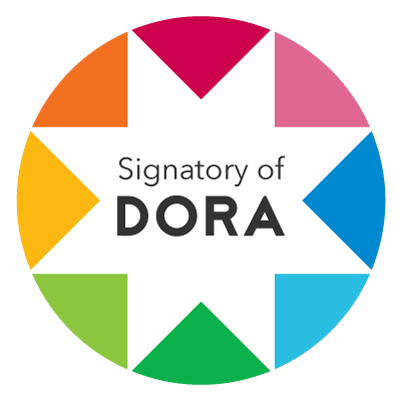Aprendizagem motora nas ciências do movimiento humano: uma análise bibliométrica
DOI:
https://doi.org/10.15517/1qke4780Palavras-chave:
produção científica, estudos bibliométricos, movimento humano, comportamento motoraResumo
O aumento da produção científica em diversas áreas do movimento humano proporciona a oportunidade de realizar estudos bibliométricos em aprendizagem motora. O objetivo do presente estudo foi sistematizar as informações publicadas em aprendizagem motora entre 2000 e 2024, por meio de uma análise bibliométrica. Um total de 570 estudos relevantes sobre o tema, publicados entre 2000 e 2024, foram selecionados através de uma busca na base de dados Scopus. Foi realizada uma análise de métricas de desempenho e estrutura, considerando total de publicações, número de documentos, taxa de crescimento anual de artigos publicados, afiliações e autores mais relevantes, redes de colaboração, mais citados mundialmente, tendências temáticas, entre outros. Dos 570 documentos analisados, G. Wulf foi identificado como o autor mais relevante, a Universidade de Toronto como a afiliação mais relevante e os Estados Unidos da América como o país com maior produção científica. O estudo mais citado apresenta o conceito do problema dos graus de liberdade. Em conclusão, este trabalho fornece uma visão geral da produção científica do tema relacionado à aprendizagem motora nos últimos 25 anos.
Downloads
Referências
Aria, M., y Cuccurullo, C. (2017). bibliometrix: An R-tool for comprehensive science mapping analysis. Journal of Informetrics, 11(4), 959-975. https://doi.org/10.1016/j.joi.2017.08.007
Brady, F. (2004). Contextual Interference: A Meta-analytic study. Perceptual and motor skills, 99(1). https://doi.org/10.2466/pms.99.1.116-126
Bressel, E., Yonker, J. C., Kras, J., y Heath, E. M. (2007). Comparison of static and dynamic balance in female collegiate soccer, basketball, and gymnastics athletes. Journal of athletic training, 42(1), 42–46. https://pubmed.ncbi.nlm.nih.gov/17597942/
Carter, M. J., y Ste-Marie, D. M. (2017). An interpolated activity during the knowledge-of-results delay interval eliminates the learning advantages of self-controlled feedback schedules. Psychological Research, 81(2), 399-406. https://doi.org/10.1007/s00426-016-0757-2
Chua, L.-K., Jimenez-Diaz, J., Lewthwaite, R., Kim, T., y Wulf, G. (2021). Superiority of external attentional focus for motor performance and learning: Systematic reviews and meta-analyses. Psychological Bulletin, 147(6), 618-645. https://doi.org/10.1037/bul0000335
Donthu, N., Kumar, S., Mukherjee, D., Pandey, N., y Lim, W. M. (2021). How to conduct a bibliometric analysis: An overview and guidelines. Journal of Business Research, 133, 285-296. https://doi.org/10.1016/j.jbusres.2021.04.070
Ferreira, B. P., Malloy-Diniz, L. F., Parma, J. O., Nogueira, N. G. H. M., Apolinário-Souza, T., Ugrinowitsch, H., y Lage, G. M. (2018). Self-Controlled Feedback and Learner Impulsivity in Sequential Motor Learning. Perceptual and Motor Skills, 126(1), 157-179. https://doi.org/10.1177/0031512518807341
Jiménez-Díaz, J. (2020). Aprendizaje motor y feedback: Una revisión de literatura. Revista Iberoamericana de Ciencias de la Actividad Física y el Deporte, 9(3), 42-58. https://doi.org/10.24310/riccafd.2020.v9i3.6385
Jiménez-Diaz, J., Chaves-Castro, K., y Morera-Castro, M. (2021). Effect of Self-Controlled and Regulated Feedback on Motor Skill Performance and Learning: A Meta-Analytic Study. Journal of Motor Behavior, 53(3), 385-398. https://doi.org/10.1080/00222895.2020.1782825
Jiménez-Díaz, J., Chaves-Castro, K., Morera-Castro, M., Portuguez-Molina, P., y Morales-Scholz, G. (2024). Physical practice, mental practice or both: A systematic review with meta-analysis. Journal of Physical Education and Human Movement, 5(2), 1-14. https://doi.org/10.24310/jpehm.5.2.2023.17875
Kim, T., Jimenez-Diaz, J., y Chen, J. (2017). The effect of attentional focus in balancing tasks: A systematic review with meta-analysis. Journal of Human Sport and Exercise, 12(2). https://doi.org/10.14198/jhse.2017.122.22
Latash, M. L., Scholz, J. P., y Schöner, G. (2007). Toward a new theory of motor synergies. Motor Control, 11(3), 276-308. https://doi.org/10.1123/mcj.11.3.276
Macama Guerrero, N. A., y Monroy Bohorquez, D. M. (2018). Efectos de la realidad virtual sobre el aprendizaje motor en niños con parálisis cerebral. Revisión de literatura. [Proyecto de investigación para optar al título de especialista en fisioterapia de neurorrehabilitación, Institución Universitaria Escuela Colombiana de Rehabilitación, Facultad de Fisioterapia]. Repositorio Institucional ECR. https://repositorio.ecr.edu.co/server/api/core/bitstreams/e3cce37e-e72b-41fa-9f94-55dee7b68697/content
Magill, R. A. (1990). Motor Learning Is Meaningful for Physical Educators. QUEST, 42, 126-133. https://www.tandfonline.com/doi/abs/10.1080/00336297.1990.10483984
Magill, R. A., y Anderson, D. (2013). Motor Learning and Control: Concepts and Applications. (10th ed.). McGraw-Hill Higher Education.
Merians, A. S., Jack, D., Boian, R., Tremaine, M., Burdea, G. C., Adamovich, S. V., Recce, M., y Poizner, H. (2002). Virtual reality–augmented rehabilitation for patients following stroke. Physical Therapy, 82(9), 898-915. https://doi.org/10.1093/ptj/82.9.898
Ramos, M. B., Koterba, E., Rosi Júnior, J., Teixeira, M. J., y Figueiredo, E. G. (2019). A Bibliometric Analysis of the Most Cited Articles in Neurocritical Care Research. Neurocritical Care, 31(2), 365-372. https://doi.org/10.1007/s12028-019-00731-6
Schmidt, R. A., y Lee, T. D. (2013). Motor Learning and Performance: From Principles to Application. (6th ed.). Human Kinetics. van Eck, N. J., Waltman, L., Dekker, R., y
Shea, C. H., y Wright, D. L. (1997). An Introduction to Human Movement: The Sciences of Physical Education. Allyn and Bacon.
van den Berg, J. (2010). A comparison of two techniques for bibliometric mapping: Multidimensional scaling and VOS. Journal of the American Society for Information Science and Technology, 61(12), 2405-2416. https://doi.org/10.1002/asi.21421
Wulf, G., y Lewthwaite, R. (2016). Optimizing performance through intrinsic motivation and attention for learning: The OPTIMAL theory of motor learning. Psychonomic Bulletin & Review, 23(5), 1382-1414. https://doi.org/10.3758/s13423-015-0999-9
Wulf, G., Shea, C., y Lewthwaite, R. (2010). Motor skill learning and performance: A review of influential factors. Medical Education, 44(1), 75-84. https://doi.org/10.1111/j.1365-2923.2009.03421.x
Xu, F., Xu, J., Zhou, D., Xie, H., y Liu, X. (2022). A Bibliometric and Visualization Analysis of Motor Learning in Preschoolers and Children over the Last 15 Years. Healthcare, 10(8), 1415. https://doi.org/10.3390/healthcare10081415







